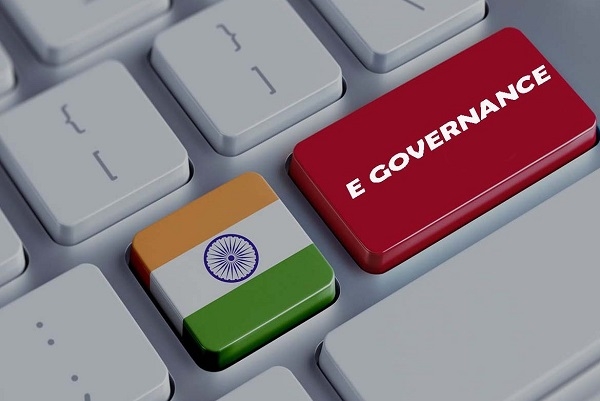Usher In a Citizens’ Technology
Total Views |
Covid-19 has led to a crisis never seen before in our lifetime. Closest example goes back to the Second World War 1939-45 as echoed by PM and UN Secretary General Antonio Guterres. Earlier example is the First World War and Spanish Flu pandemic 1914-20. This makes Covid-19 battle almost Third World War ironically against an invisible tiny micro-organism.

China is on the road to recovery driven by a deeply felt national agenda of world dominance held since the days of Admiral Zheng He. The US is expanding economic stimulus beyond 10% of GDP with plans to upgrade major US infrastructure built 50+ years back. Our economic stimulus has summed up to 10% of GDP from initial sub 1 % despite fiscal and monetary constraints.
Current national mood is tense as Covid-19 cases increase and economic crisis looms with FY 21 GDP growth estimates vary from +2 to -3%. However, this crisis also presents opportunities for bold reforms not just in infrastructure, laws, local economies etc but in governance too.
A major opportunity in the revival and rebound phase is for strategic view and push to use Information Technology in governance. Our population, diversity, geographical expanse and complexity of governance in centre and states demand a bold, comprehensive and strategic framework for using IT in governance. It not just means using our technological prowess but needs to take a wider view of state and central functions, change from activity to outcome based approach, best practices sharing among states, centre-state cooperation in respective spheres and drive towards making governance more efficient, effective and accountable.
E-governance as a term has been mostly used in India for citizen service deliveries at Central and state levels with focus on activities rather than outcomes except for few examples like Passport services. Many states have made good strides like Karnataka, Gujarat, Telangana, AP in some areas but most states have suboptimal systems. Few successes have been led by heroic actions of some bureaucrats and occasional vision of some CMs/ministers.

Most social services are delivered at state level like health care, vehicle/driving licenses, industrial approvals, law and order, electricity, water etc. Their e-delivery is manifested by poor website designs and user navigation, less focus on smooth user experience, high page load times and errors, lack of good quality self-help guidelines and FAQs, patchy multilingual features, inadequate data and IT systems security, lack of robust architectures and single sign-ons, integration of related services, patchy fulfilment tracking etc. A comparison of citizen services websites on healthcare for MP, UP and Maharashtra was done with gaps clearly visible. Lack of inter-operable data has been a problem in Covid-19 battle.
Data gathering exercise once in 10 years like for NPR is inadequate in today’s times for policy making and has already become prone to political ambush. We can use citizen services delivery data standardized and reusable across India for policy making more effectively in practical real time. If granular data of workforce in informal and formal sectors through their use of government services with an architecture driven approach was available, we could have modelled and foreseen recent plight of migrants in lockdown.
We need to plan bold steps like defining key strategic projects at central level in customs, ports and national transport systems, agricultural markets and PDS systems integration, defence, education, telemedicine, legal services etc. Key outcome goals can be defined as revenue increase, leakage prevention, contract process efficiency, time to turn around, cost control etc. This requires integrated view at the highest level to drive policy outcomes, usage of global best practices like Malaysian government projects to redesign customs processes digitally with quantified pre-set targets to plug revenue leakage.
We need to leverage principles of enterprise and data architecture, reuse of IT systems across states, data and application cyber security standards, interoperability, AI, outcome and KPIs driven approach and over time link to financial devolution formulae.
This will also help drive adoption of key technologies like AI, Blockchain, 5G, Industry 4.0 among others where we have been playing below potential. We are in the lower heap of top 10 in AI with yet to establish strategic bold and integrated AI policy while a country like us with technological prowess, huge population and its data, GST network and JAM trinity should have been in top 3. China’s multi billion US dollar investment driven ambitious policy with global AI leadership aim by 2030 has become a key catalyst to US-China strategic rivalry. Our Blockchain policy is currently Crypto centric lacking balance with the smart contracts paradigm.
Poor health of most Telcos have impacted our 5G plans as we lose the opportunity to influence rapidly firming 5G global standards. Industry 4.0 is yet to reach most of the manufacturing sector. Data intermediary guidelines, Privacy Regulations and IT Act revamp have been moving within our governance systems for too long. Perennial mistrust remains between startups and government. Big e-commerce players are beyond Indian controlling ownership.
There is an urgent need to look at India’s technology agenda from the top in a holistic way as all these technologies are interrelated. Present government has made good strides in using IT but challenges and needs have increased rapidly. Above technologies shall lead to trillions of US Dollars of new global GDP in the next 10 15 years and therefore need bold interventions with a sense of urgency. This will also be key to execute Atma-nirbhar Bharat stimulus steps like agri-market reforms, one nation-one ration card, EodB, urban bodies management etc
Modern governance is impossible to be made effective and efficient without using Information Technology therefore technology decisions and management cannot be left to few heroic bureaucrats and IT Ministers. Political direction and vision must be consistently driven by CMs, Cabinet Ministers and PM. A national forum driven by political leadership at centre and states is needed for alignment to overseeing use of Technology in Governance.
Considering growing debates on technology driven remote voting in times of social distancing which is also key to enfranchise millions of internal immigrants and clamour for remote meetings of parliamentary standing committees are testament to what is inevitable. Estonian Model though of a smaller country is very pertinent in this regard.
Current central government leadership has often demonstrated capacity and will to drive changes with far reaching impact on the nation. Now Information Technology awaits its true chance!

